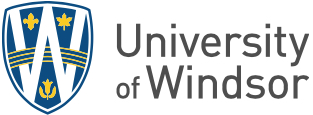 Mechanical engineering student Shreya Patki’s design of a reconfigurable hand brace earned her first place in a national competition.
Mechanical engineering student Shreya Patki’s design of a reconfigurable hand brace earned her first place in a national competition.
A UWindsor engineering student’s design of a reconfigurable hand brace has landed her first place in a national competition.
Shreya Patki, a third-year mechanical engineering student and UWindsor Outstanding Scholar, took top honours in the Canadian Manufacturers and Exporters (CME) Canada Makes 2019 3D Challenge for her design of an environmentally friendly, custom hand brace that can assist elderly people who lack fine motor control or people with Ehlers Danlos Syndrome — a genetic connective tissue disorder.
“The problem with current braces is that they are expensive to customize and generally sized braces don’t allow for flexibility or comfort. This is where my research comes in,” Patki says.
Thanks to additive manufacturing — often referred to as 3D printing — Patki was able to use advanced design and modeling tools to create a cost-effective, environmentally-friendly brace that can easily be customized to all hand shapes and sizes. Additive manufacturing is a process that builds components in layers by placing material only where it is needed. It does not require multiple cutting tools, machines or fixtures and as a result, has less material waste and energy usage when compared to fabricating components using a machining or molding approach, says Patki’s faculty advisor Jill Urbanic, an associate professor in the Department of Mechanical, Automotive and Materials Engineering.
“I am very proud of Shreya's efforts,” says Dr. Urbanic. “She has broken down a complex problem into bite-sized pieces and has worked on solving them. I am looking forward to seeing what she does in her fourth year.”
The project Patki has been working on for nearly two years was judged by a panel drawn from industry and academia. Patki received a $1,250 scholarship and is now in the running for a paid internship with Burloak Technologies, an Oakville-based firm that produces highly engineered additive manufactured components.
“It is through design submissions like Shreya’s, and the other participants, that we are able to grow the competition and program as a whole,” says Cyndy Palleske, CME’s vice president of Ontario operations and membership engagement. “We are excited to be able to encourage students to think outside of the box in their design skills and to continue to develop their experience and skills.”
CME is national non-profit organization that partners with industry, service providers, academia, and government to offer customized programs, events and services, including the additive manufacturing program, Canada Makes.
